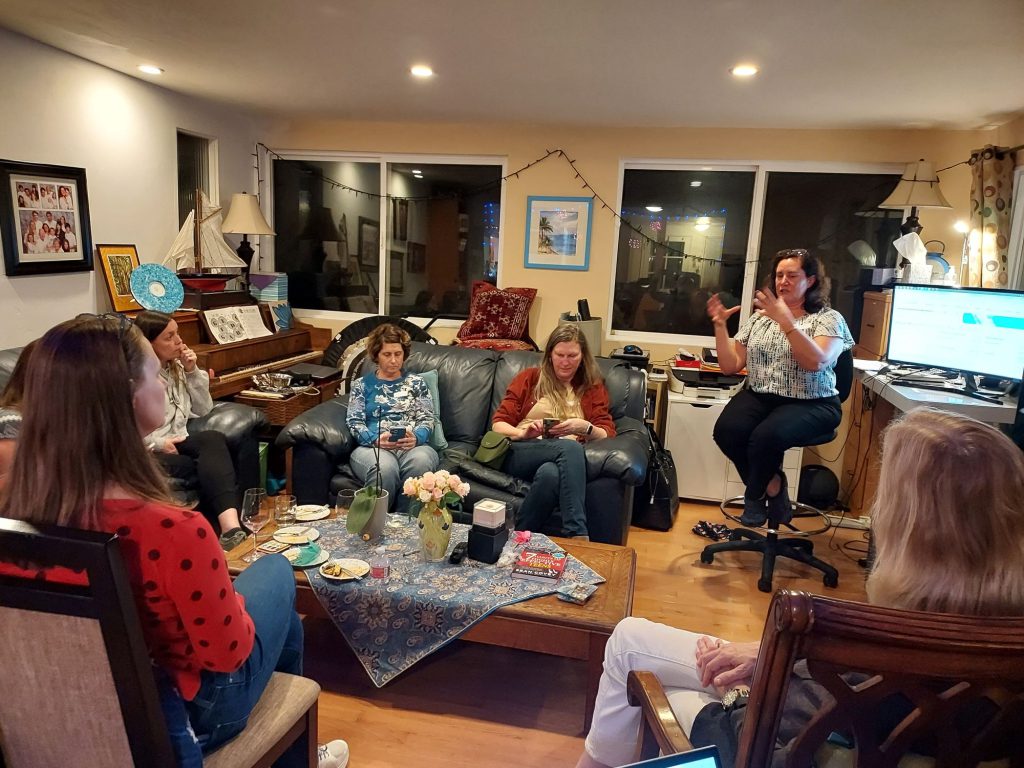Global Gals 02/29/2024
Angela, Andi, Lisa, Linda, Janice, Julie, Heidi, Suzanne, Megan, Krista, Jackie (Krista’s mom)
Taxes in San Diego extended to be due in June 2024! Thanks Angela for the update!
Speaker: Heidi Fifield, native San Diegan, 2nd generation Clairemont HS grad, her son Harry is 3rd generation Clairemont HS grad.
Col Poly San Luis Obisbo graduate.
Layed off from Carefusion in 2017. 50 year old woman, 1 interview in 9 months. Transitioned to personal financial advisor. Series 7, Series 66, Insurance Licenses (CA and AZ) Decided to focus Retirement Income Certified Professional. Also got specialization as divorce financial analyst.
Healthcare costs are high. Covered California $1,000 for two people and $1,500 for four people.
Questions:
- Retirement before age 65, is Covered California the only choice
- Long term care insurance; plan for long term care coverage
- Difference between whole life, universal, and other insurance
- Business owners: how to save and plan
- Single, mid-40s: how to save and plan for retirement and at what age. Is it worth buying real estate. How to put together a comprehensive financial plan.
- Close to retirement, mid-60s. How to use financial planner and retire at age 65. How to consider lifestyle and long term care plan or insurance.
- 57, what does a 10 year plan look like to retire at age 67? Don’t want to run out of money with family members that live a long time (90+ years old).
- How do long term care insurance payouts work? Couldn’t get the money. Frustrating.
Insurance agent should help with payouts from longterm care insurance carrier.
Two types of insurance:
1)temporary insurance – shorter term. Use it or lose it. 1-2% chance that anyone will cash in on that type of insurance.
2)permanent – several flavors such as Whole Life. While you pay your premium, we will give you an interest rate. Can be cashed out. Or, pay 20 years of premium and then get reduced coverage for the rest of your life; not growing anymore but still have security of the coverage. A variety of whole life is a universal life insurance. Whole life most conservative life insurance. Variable Universal Life, separate monies get invested and the coverage can grow. Past health issues affect your ability to get health insurance. With variable, you hope the investment will grow. Policy could have a living benefit rider that allows payment for your care. Agent or financial planner will look for an insurance company that has the options.
Long term care insurance is just like life insurance: has both permanent and temporary policies. Mostly permanent policies- look at payout period (i.e. 90 days waiting period) and daily payout (i.e. $500 max per day) or monthly payout (i.e. flat rate each month). Look for the monthly benefit. The payouts are established at the time you purchase the long term care policy. Get inflation protection (i.e. 3% interest). Healthcare costs are growing at 6-7% per year, keep that in mind. Insurance based on age, health, time of coverage. Average for women for long term care need is 6 – 8 years. Use other tools and investments to mitigate the need for long term care insurance. Look at annuities as option.
How much money does it cost for care attendant? How much should we have? We just don’t’ know.
www.genworth.com Use the website for longterm care costs. Look at data on Aging and You > Cost of Care data
Medicare does not cover any time of long-term care. MediCaid is federal government, you have to spend down. Medi-Medi has to be paid back.
Home and other investments in a trust keeps it outside your name. Look at loopholes when setting up the trust. Estate planner recommendations: Tara Shaw (Suzanne Smith reco) and Yodel Delaso Penacho (Heidi reco).
Annuity – lifetime income. Pay a little bit in each month, then you get paid a monthly amount for the rest of your life. In retirement, you may want your 401k into an annuity. The annuity will be paid for your lifetime. Promise to pay the monthly amount for the rest of your life. Types of annuities: Lump sum annuity, variable premium base, fixed premium base. Lifetime income from annuity.
Doctor note stating you can’t perform 2 of the 6 ADL to get long-term care insurance payout.
Use your insurance agent to explain the policies. Read the fine print.
Financial advisor/financial planner should be the quarterback. The financial advisor will give you all the options, has partners with insurance, etc. Financial advisor should know the players.
Gets kids involved, let them know your plans. Talk to your kids about your plans and expectations!
AFLAC is accident insurance; emergency funds. Similar to a disability policy.
Employers disability or SSDI is taxable.
Reverse mortgages can be part of the planning toolbox. Get counseling to consider a reverse mortgage. Reverse mortgages work really well for individuals that do not have heirs (kids).
Eighteen (18) serious risks to consider in retirement. 1) Risk of running out of money; longevity.
Get a trust if you have property and/or children. Can protect your assets for your kids from spouses.
Heidi can do a review of any policies and give you the provisions to help you understand.
Heidi can review your situation, goals, risks and then build a plan from where you are today to where you want to be. Use the funds that you are not spending for good purposes rather than only a savings account. Heidi can advise on small business owners and sole proprietors; one of her partners specializes in small business exit plans. Put the plan together and help with plan implementation – check all the boxes. Heidi tries to meet twice a year after the implementation is complete. During implementation, meet more often such 4+ meetings to implement.
Fee example: $1,200 for simple plan. $3,500 plan for mid-career, quarterback estate planner, insurance. $3,000-$5,000 for someone who is closer to retirement. About $1,000 per year as a retainer.



